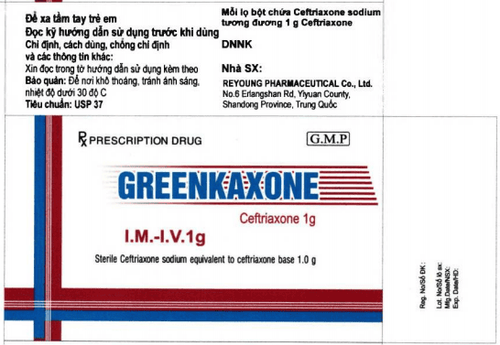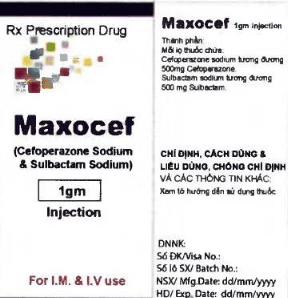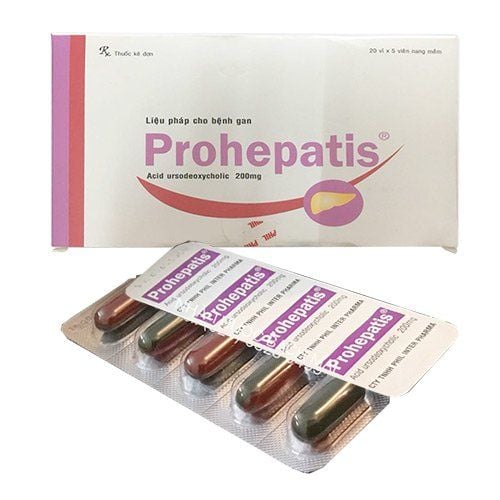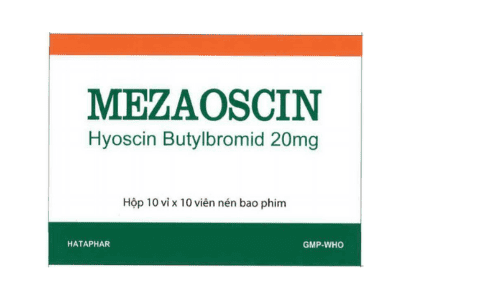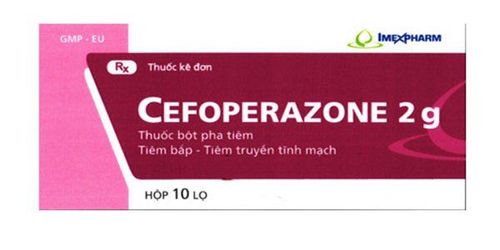This is an automatically translated article.
Ultibact is a combination antibiotic that is used in the treatment of parasites, anti-infectives, antivirals and antifungals. Uses of Ultibac will be shared in the following article.
1. What is Ultibact?
Ingredients of the drug Ultibac. Each vial contains:
Cefoperazone sodium equivalent to Cefoperazone.........500 mg; Sulbactam sodium equivalent to Sulbactam.........500 mg. Ultibact is a combination of Cefoperazone (a semi-synthetic cephalosporin antibiotic, broad-spectrum and parenteral) with Sulbactam (a derivative of the basic penicillin nucleus). Ultibact is manufactured as a powder for injection by Systa Labs of India with the serial number: VN-18785-15.
2. What disease does Ultibac treat?
Ultibac is indicated for treatment and prescribed by a specialist. Usually, Ultibac is used to treat infections caused by susceptible bacteria such as:
Inflammation of the upper and lower respiratory tract. Peritonitis and other intra-abdominal infections (cholecystitis, peritonitis and cholangitis,...). Sepsis . Skin and soft tissue infections. Pelvic inflammatory disease, endometritis, gonorrhea and other infections of the genital organs. Upper and lower urinary tract infections. Meningitis . Bone and joint infections. Due to its broad antibacterial spectrum, Ultibact can also effectively treat most infections. However, Ultibact can be combined with other antibiotics if needed. In case of combination with Aminoglycoside, it is necessary to monitor the patient's renal function during the course of treatment.
Note: Ultibact should be used in treatment after the results of isolating pathogenic bacteria and determining their sensitivity to the drug.
3. Contraindications to the use of Ultibact
Contraindicated using Ultibact in the following cases:
Patients with known allergy to penicillin group antibiotics or cephalosporin group antibiotics. Patient has porphyria.
4. Side effects when using Ultibac
During the use of Ultibac, patients may experience some side effects as follows:
Digestion: Diarrhea, loose stools, often accompanied by nausea and vomiting. Skin: Rash, exanthema and urticaria. Hematology: Mild neutropenia with prolonged and reversible treatment. Some cases of positive Coomb's test during treatment with cephalosporin antibiotics. Decreases in hemoglobin or solid red blood cell volume have been reported with cephalosporins. Transient eosinophilia and thrombocytopenia, hypoprothrombinemia. Other reactions: Headache, fever, injection site pain and chills (<1%). Laboratory: Temporarily increased SGOT, SGPT, alkaline phosphatase and bilirubin (6.3 - 10%). Local armature: Occasionally transient local pain after intramuscular injection. As with other Cephalosporins and Penicillins, some patients may develop phlebitis at the site of infusion during intravenous infusion.
Side effects from Ultibac are usually mild to moderate and resolve spontaneously with continued treatment. Please inform your doctor or medical staff of any unwanted effects encountered during the use of the drug.
5. Dosage and how to use Ultibact
Ultibact is used as prescribed and directed by a doctor, usually the drug is used as follows:
Usual Ultibact treatment dose for adults:
Mild infections: 1-2g/day, each dose 12 hours apart. Severe infections: 2-4g/day, 12 hours apart. Treatment of severe infections or treatment of less susceptible bacteria: Total dose 8g/24h. The maximum recommended dose for sulbactam is 4 g/day. When treating infections caused by Streptococcus pyogenes, the drug should be used for at least 10 days.
Adjust the dose of Ultibact in patients with impaired renal function:
Patients with creatinine clearance of l5 - 30 ml/min should take a maximum of 1g sulbactam every 12 hours (maximum 2g sulbactam per day), patients with clear Creatinine clearance < 15 mg/min should be limited to a maximum of 500 mg of sulbactam every 12 hours (maximum 1 g of sulbactam per day). The dose used for people with liver disease or biliary obstruction should not exceed 4g/24 hours.
In severe infections it may be necessary to add cefoperazone separately.
The pharmacokinetics of sulbactam are highly variable during hemodialysis. Therefore, the drug should be used after dialysis.
For children: The effectiveness and safety have not been determined for this subject.
6. Ultibact drug interactions
Ultibact may have some interactions as follows:
Using the drug with alcohol: Flushing, sweating, headache and tachycardia. Concomitant use of Ultibact with Warfarin and Heparin may potentiate the prothrombin-lowering effect of Cefoperazone. Aminoglycoside antibiotics: Sulbactam/ Cefoperazone and other Aminoglycosides should not be mixed together as this will reduce the drug's activity. Lindocaine: The initial reconstituted solution should not be made with 2% lindocaine HCl because these suspensions are incompatible. Caution should be exercised when combined with anticoagulants, thrombolytics, and nonsteroidal anti-inflammatory drugs because of the potential for bleeding. Ultibact should not be mixed with Amikacin, Gentamicin, Kanamycin B, Doxycynlin, Meclofenoxate, Ajmalin, Diphenhydramine, Potassium magnesium aspartate to avoid precipitation. Laboratory Interactions: The urine glucose response may be falsely positive with Benedict's or Fehling's solution. Coomb's test was positive.
7. Ultibact Overdose
Overdosage of Ultibac can cause excessive symptoms of side effects. High concentrations of beta-lactams in the cerebrospinal fluid can cause neurological effects including convulsions and should be taken with caution.
Hemodialysis may increase drug elimination from the body if overdose occurs in patients with kidney disease.
8. Ultibact Care Instructions
Ultibac should be stored in a cool dry place, not exceeding 30°C and protected from light. The solution after reconstitution should be stored at room temperature below 25 degrees Celsius and should be used within 24 hours or refrigerated (2-5 degrees Celsius) and used within 5 days.
Above are the uses of Ultibact, patients should carefully read the instructions for use before using. If necessary, you can consult more doctors and pharmacists for faster results.
Please dial HOTLINE for more information or register for an appointment HERE. Download MyVinmec app to make appointments faster and to manage your bookings easily.




